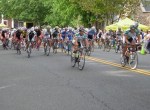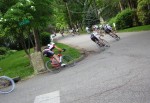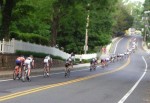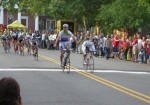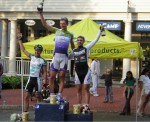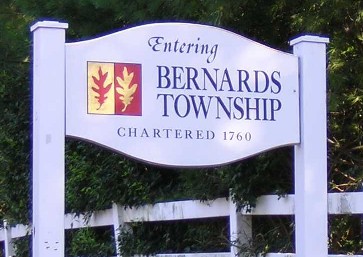Head injuries and concussions are the hot topic right now in the NFL and around the sporting world. Rightfully so as well. The incidences and the injuries are significantly increasing. There is no one best solution to this real problem, but limiting the hitting and tackling to a specific ‘zone’ within the body are NOT an answer in our opinion.
The game of football is violent by its very nature, it is part of the sport. It is what separates these incredible athletes from the weekend warriors and armchair qb’s. Permanant head injuries and paralysis are some of the most very unfortunate parts of the game.
Redefining the game is truly not the best solution to curbing head injuries, but rather redefining the protective gear is. With mounting pressure from the media, some fans, sponsors, some players and health care professionals, Commissioner Roger Goodell is bound to make changes. Let’s hope they are not in haste.
Head trauma and head injuries are some of the most under diagnosed and mis-understood afflictions in sports. As more and more data and information comes to light regarding athletes and concussions, the closer sports and medical professionals come to finding a workable solution and possibly better prevention methods.
Last month, former football player Chris Nowinski testified before the House Judiciary Committee, whose chairman, Rep. John Conyers Jr. (D-Mich.), called for a hearing aimed at placing focus on the issue. NFL Commissioner Roger Goodell said in his testimony, “We know that concussions are a serious matter and that they require special attention and treatment.” According to the NFL, about 175 concussions occur league wide each season.
More recently the NFL has suspended its in-house study of the long-term effects of concussions in retired players. In the face of heated criticism from outside medical experts, the players union and members of Congress (although Congress involvement is the last thing any sporting entity needs) because of suspect data and conflict of interest.
Gee, you think? The fact is, that the NFL has known for quite some time that concussive injuries are more dangerous with severe long-term aftereffects. So why is it only now, after numerous high-profile concussion injuries in 2009, to both NFL and NCAA stars has the NFL truly addressed this very serious issue. Like almost anything in life…it comes down to dollars.
“Protect the shield” as infamously echoed by the commissioner. Protect it indeed, at almost any cost, until it becomes so glaring and such a problem that action is needed to address the problem. The days of sweeping serious issues under the carpet are gone. In this world of media now, virtually no one or nothing can hide from the stream of real-time information.
Players are now supposedly encouraged to come forth and report and/or disclose any signs or symptoms that may be associated with a concussion. That may be true, but actually getting some of the tougher, hard-nosed players to admit a weakness may prove to be a stumbling block in itself.
Medically, the treatment of concussions are passive and depend mainly on allowing the brain to heal itself utilizing rest and a strict avoidance of activities that may induce a re-injury. It is completely unsafe and irresponsible to return to play while symptomatic in any way following a concussion. Return to play should follow a stringent medically advised step by step process. The prescribed progression will typically vary depending on the duration of post-concussion symptoms.
The Data
National Football League player concussions occur at an impact velocity of 9.3 +/- 1.9 m/s (20.8 +/- 4.2 mph) oblique on the facemask, side, and back of the helmet. There is a dire need for new testing procedures to evaluate helmet performance for violent impacts causing concussion.
Pendulum impacts were used to simulate 7.4 and 9.3 m/s impacts causing concussion in NFL players. An instrumented Hybrid III head was helmeted and supported on the neck, which was fixed to a sliding table for frontal and lateral impacts. Second, a linear pneumatic impactor was used to evaluate helmets at 9.3 m/s and an elite impact condition at 11.2 m/s.
The severity of the head responses was measured by a severity index, translational and rotational acceleration, and other biomechanical responses. High-speed videos of the helmet kinematics were also recorded. The tests were evaluated for their similarity to conditions causing NFL concussions.

It has been noted that football players from age 30 and up to 50 were 19 times more likely to be diagnosed with a memory disorder or dementia than the national average. Players over 50 were diagnosed with dementia-related illness at a rate of 5 times the national average.
A new linear impactor was developed for use by the National Operating Committee on Standards for Athletic Equipment (NOCSAE). The concluding results from the pendulum test closely simulated the conditions causing concussion in NFL players. Newer helmet designs and padding reduced the risk of concussion in 7.4 and 9.3 m/s impacts oblique on the facemask and lateral on the helmet shell.
The linear impactor provided a broader speed range for helmet testing and more interactions with safety equipment. NOCSAE has prepared a draft supplemental standard for the 7.4 and 9.3 m/s impacts using a newly designed pneumatic impactor. No helmet designs currently address the elite impact condition at 11.2 m/s, as padding bottoms out and head responses dramatically increase. The new proposed NOCSAE standard to improve football helmet shell and padding design is the first to address helmet performance in reducing concussion risks in football.
The fact is, that football has to invest in better designed and more protective helmets. Cost should NOT be an issue. With teams and the league itself worth billions of dollars, the cost of protective equipment should NEVER be a question or consideration.
Similar carbon fiber/kevlar and energy apsorbing technology and knowledge that is utilized for F1, MotoGP and other motorsport helmets with some version of a Hans type device needs to be incorporated into football helmet design and manufacturing in order to minimize the high rate of brain injuries suffered by football players worldwide.
data sourced from the NFL, Ovid, PubMed and NCAA.

